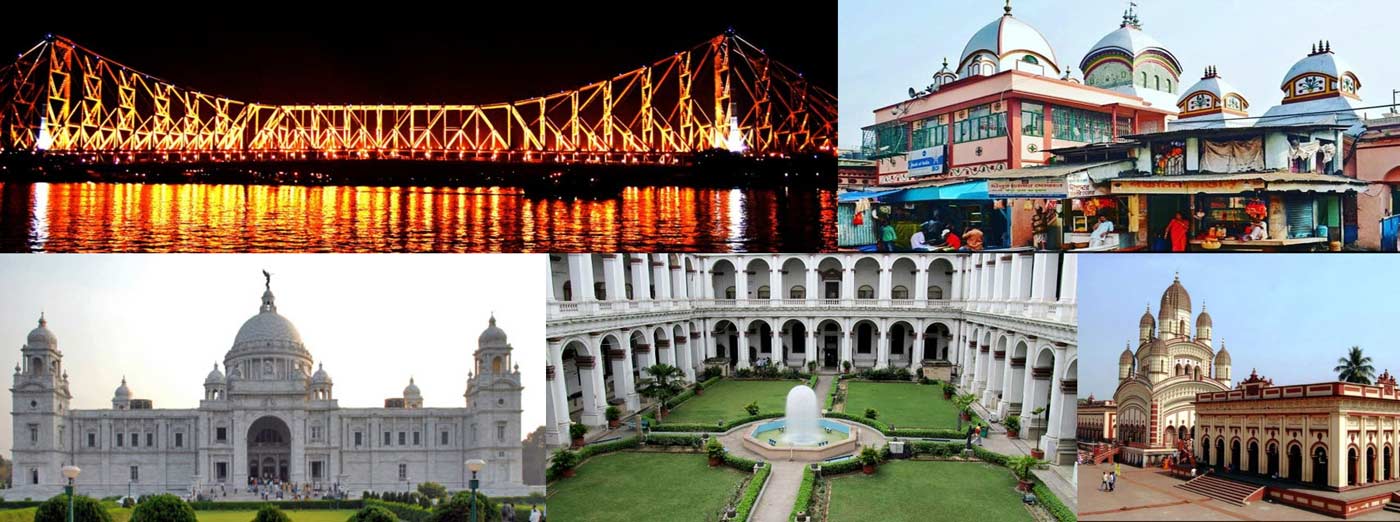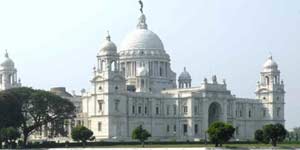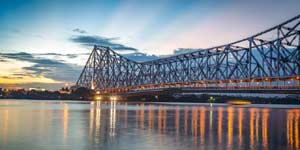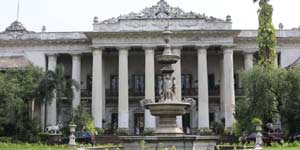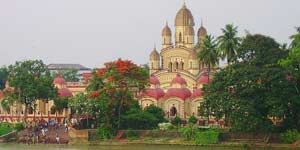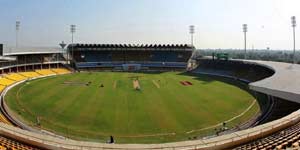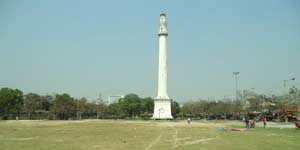
Dakshineswar Kali Temple
Dakshineswar Kali temple is said to have been built by the lady philanthropist Rani Rashmoni after the goddess Kali came to her in a dream. Its nine spires, in traditional Bengali style, stand over one hundred feet high and cast an impressive silhouette along the eastern banks of the Hooghly River. Within the inner sanctum, an idol of the Goddess Kali standing on the chest of Shiva rests upon a solid silver, thousand petalled lotus flower. There is also a temple to Radha-Krishna: the forms of masculine and feminine godliness. Along the riverfront, there are twelve shrines to Shiva as well as a bathing ghat. The temple was completed in 1855 and in 1856 Ramakrishna was appointed head priest. As his reputation as a mystic grew, so did the fame of the temple. To this day, large numbers come on pilgrimage to Dakshineswar Kali.
In the early 1800s, Dakshineswar was a small village along the eastern banks of River Ganga. Dense forests surrounded the area where the famous Dakshineswar temple stands today. It was 300 years back when Durgaprasad Roy Choudhury and Bhavaniprasad Roy Choudhury, members of the renowned Savarna Roy Choudhury family settled here. Yogindranath, one of the successors of this family, was an ardent devotee of Sri Ramakrishna who later was known as Swami Yogananda.
The famous Dakshineswar temple which houses Goddess Kali was founded by Rani Rashmoni following a dream she saw when she was about to embark on her pilgrimage to Benaras. A long term plan of the Rani materialized which she had longed to perform when her husband died with the unfulfilled wish of constructing a Kali temple. The idols of the Gods and the Goddess were decided to be installed on the snana-yatra day, an auspicious day for the Hindus. On 31st May 1855, more than 1 lakh Brahmins were invited from different parts of the country to grace the auspicious occasion amidst the controversy of the Rani being in no position to own a temple and to offer Brahmins to feed since she was of low birth. The Rani lived only for five years and nine months after the inauguration of the temple. She seriously fell ill in 1861. Realizing that death was approaching she decided to handover the property (which she purchased in Dinajpur (now in Bangladesh) as a legacy). For the maintenance of the temple to the temple trust she accomplished her task on 18th February, 1861 and passed away on the subsequent day.
Kolkata Tourist Attractions
Kolkata Tourist Attractions, the City of Joy, is one of the oldest and most loved cities in India. Apart from a rich history and culture, there are also a number of amazing places to visit in Kolkata. No matter what type of traveller you are, no matter where you come from, it is hard not to fall in love with Kolkata. It is a city with vibrant and colourful lanes, and you can feel the pulse as you meander through these lanes. Kolkata is not merely a city. It is an emotion that needs to be felt. It is a canvas coloured with every shade. And, if you are here, you can absolutely not miss these 21 amazing places to visit in Kolkata.
 +91 9799050299
+91 9799050299 